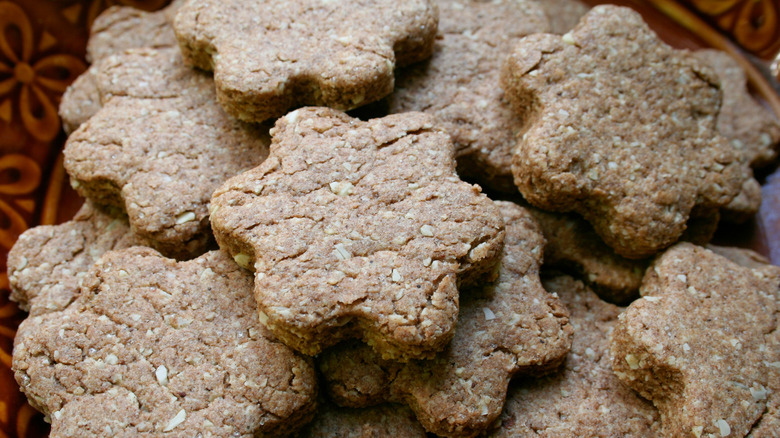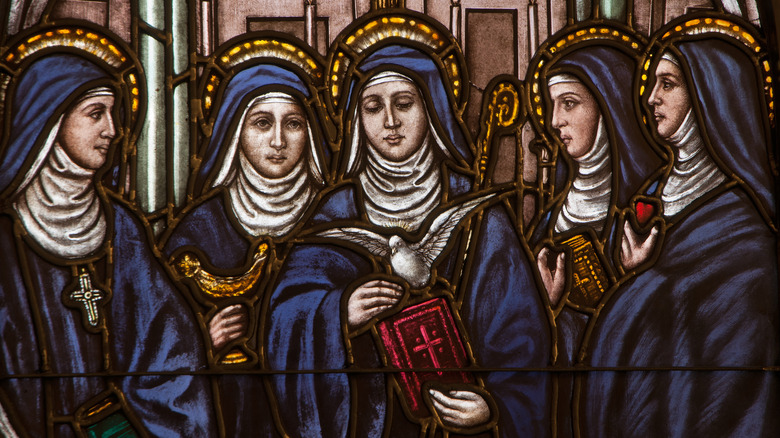The 12th Century Cookies Intended To Change Your Mood
The idea that cookies have the power to make us happy is not a new one. It even existed back in the time of Hildegard of Bingen, who was born in 1098 in what is now Germany, per Britannica, and led a remarkable life — one that was finally recognized formally by the Catholic Church in 2012, when she was canonized as a saint.
St. Hildegard was 42 years old before she began to write, America magazine observes, but given her extraordinary longevity — she lived to be 81 during the Middle Ages — she still managed to leave a rich written legacy. She wrote books about her visions, composed music and poetry, and even invented her own language for fun, notes Britannica. It was her books about medicine and healing, however, and specifically her recipes for home remedies, that have proven most influential, per Atlas Obscura. Her cookie recipes, in particular, continue to exert a profound fascination, nearly 850 years after her death.
She wasn't the first to make cookies. As What's Cooking America explains, cookies probably originated in the 7th century, with the earliest examples functioning as small-scale trials for what would later become cakes. But St. Hildegard was quite probably the first to write recipes for cookies that were intended to change the mood of those who ate them.
St. Hildegard's recipe for 'cookies of joy'
St. Hildegard crafted several cookie recipes, according to Atlas Obscura, each of which was written with healing properties in mind. Her "cookies of joy," for example, were designed to improve one's mood, while other cookies featuring licorice and ginger were meant to cure nausea and constipation, respectively.
So, what are the mood-enhancing ingredients included in St. Hildegard's recipe for "cookies of joy"? Outside of spelt, which America magazine notes was a favorite of St. Hildegard's and was included in many of her recipes, all of the other ingredients (notably, cinnamon and nutmeg) are still in widespread use. Spelt was a wheat variety common in the Middle Ages, confirms Britannica, and yes, spelt flour is still available for those who'd like to test the joyful qualities of St. Hildegard's legendary cookies.
The Sisters of St. Benedict in Ferdinand, Indiana are among the few modern producers of St. Hildegard-style "cookies of joy." Their recipe for Hildegard mini-cookies, which the Sisters claim is based on the original, features butter, brown sugar, eggs, almonds, nutmeg, cinnamon, cloves, and, of course, wheat flour (although they don't specifically mention spelt). St. Hildegard was a Benedictine nun herself, per Britannica, so the Sisters of St. Benedict are simply carrying on a very long tradition of promoting good cheer through the healing power of cookies.

